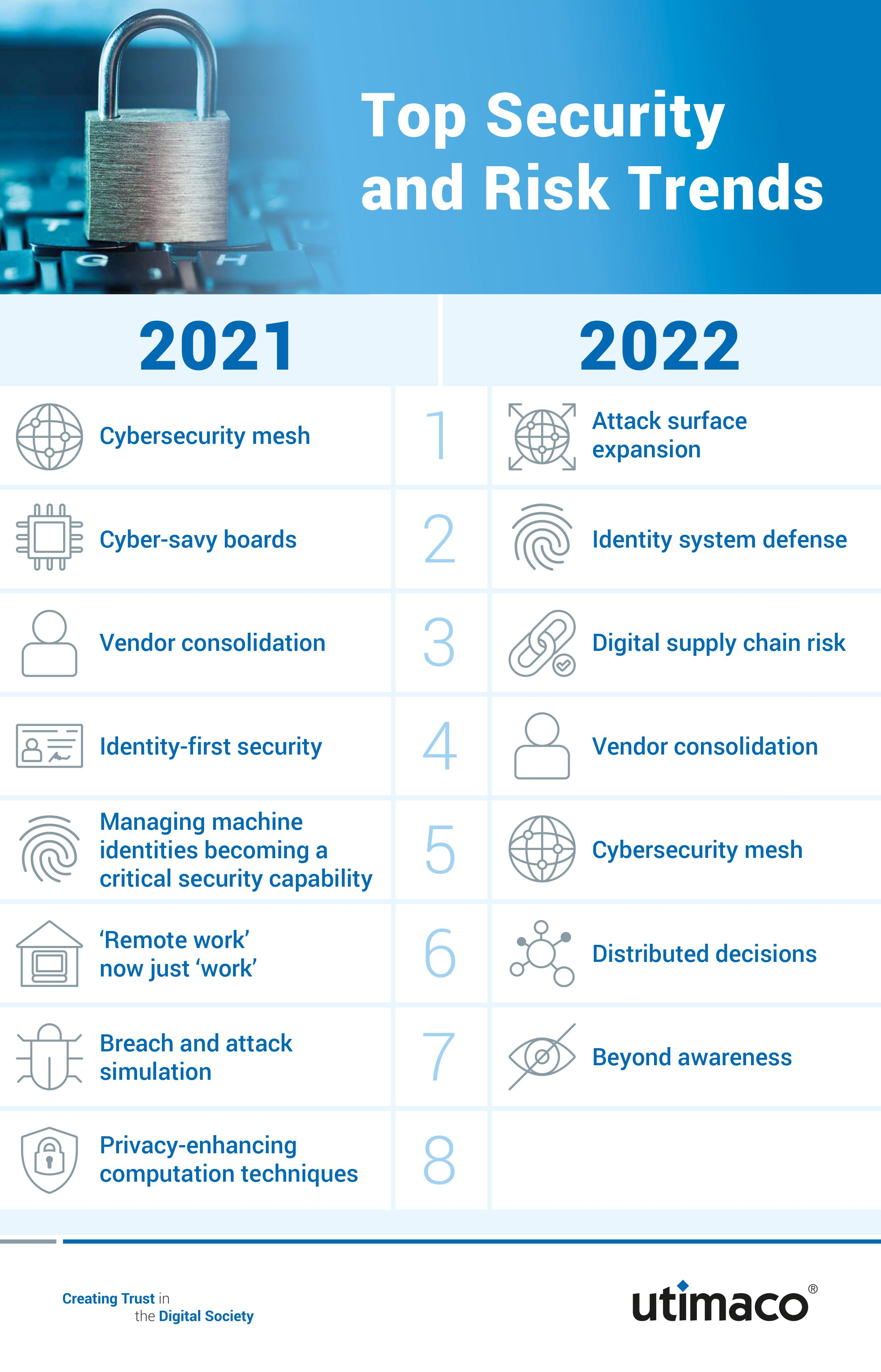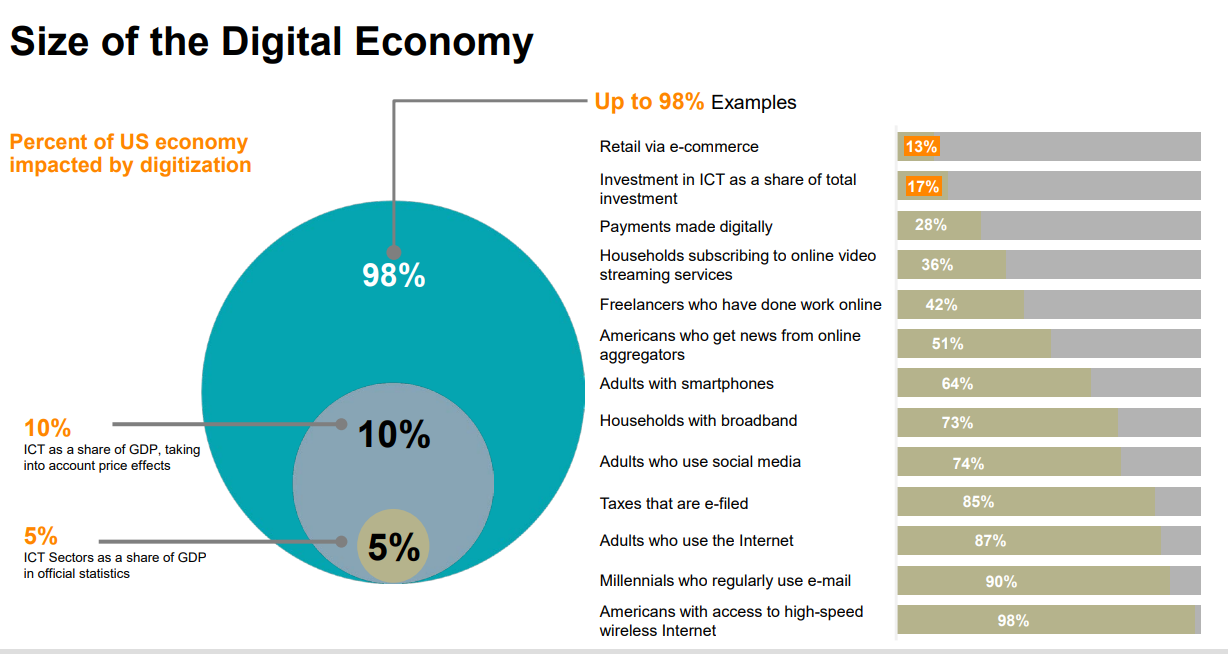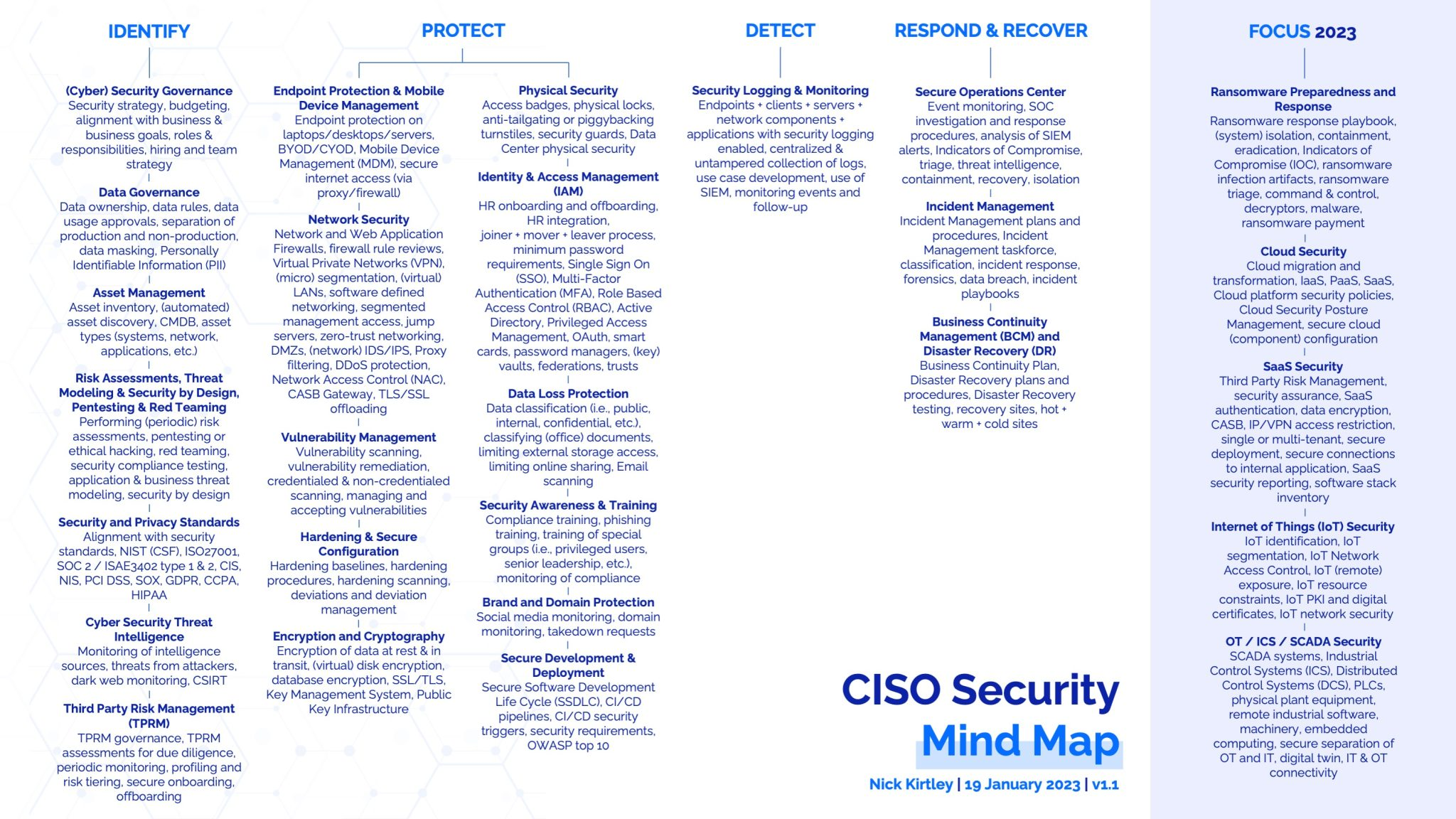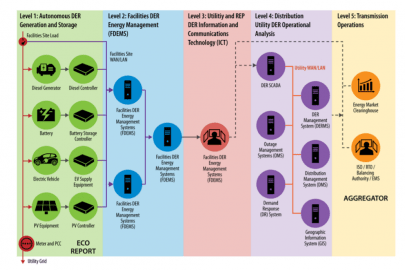In today’s fast-paced digital landscape, security trends for enterprises are evolving rapidly, emphasizing the need for robust security frameworks to counteract emerging threats. As organizations increasingly rely on cloud-based solutions and mobile technologies, they face a surge in cybersecurity threats, reminiscent of the heightened challenges seen in 2017. Data security governance has become a critical priority, with companies looking to protect sensitive information from unauthorized access and breaches. Moreover, the growth of mobile fraud poses a significant risk, as many financial transactions now occur on mobile platforms, highlighting the importance of adaptive enterprise security strategies. By staying informed on these trends, businesses can better navigate the complexities of the digital age and effectively safeguard their assets.
As enterprises embark on their digital transformation journeys, the focus shifts toward innovative protection mechanisms and anticipating potential vulnerabilities. With the increasing prevalence of online threats and the rise of mobile transaction fraud, businesses are compelled to prioritize comprehensive cybersecurity measures. Terms like data protection governance and adaptive security models are gaining traction, reflecting the ongoing evolution in safeguarding organizational assets. The landscape demands that companies explore advanced solutions, including cloud security products that can offer enhanced defense against ever-evolving attacks. Embracing these new security trends enables enterprises to not only protect their data but also to foster trust among their clients and stakeholders.
Key Security Strategies for Modern Enterprises
In today’s rapidly changing technological landscape, enterprises must prioritize their security strategies to keep pace with evolving threats. The integration of cloud and mobile technologies has broadened data accessibility but also increased vulnerabilities. Organizations are recognizing the importance of robust enterprise security strategies that combine advanced threat detection and response mechanisms with established protocols to protect sensitive data and infrastructure.
As organizations pour significant resources into security technology, it is essential to stay ahead of cybercriminals by implementing comprehensive governance frameworks. These frameworks not only guide security policies but also help in managing data security effectively, ensuring compliance with regulations. By investing in these strategies, enterprises can not only mitigate potential cyber risks but also cultivate trust among clients and stakeholders by demonstrating their commitment to data security.
Rising Mobile Fraud Threats
With the surge in mobile banking and financial transactions, enterprises are witnessing a dangerous uptick in mobile fraud. Reports suggest a staggering 60-65 percent growth in mobile fraud threats, which significantly jeopardizes business operations. Companies need to adopt adaptive security measures that can effectively counter these risks, reinforcing their mobile platforms against threats like fraud and phishing attacks.
As many consumers now rely on smartphones for financial activities, organizations must incorporate stringent security protocols within their mobile applications. This includes developing multi-factor authentication systems, encrypted connections, and continuous monitoring for unusual activity. By taking these proactive steps, enterprises can better safeguard user data and mitigate the risk of substantial financial losses associated with mobile fraud.
Emerging Cybersecurity Threats in 2017 and Beyond
As identified by cybersecurity experts, 2017 is witnessing an alarming rise in various cyber threats, including credit/debit card fraud, cyberstalking, and email account hacking. With these threats evolving in complexity, businesses must adopt more sophisticated defensive mechanisms. Focusing on hybrid security models that leverage both on-premises and cloud security products can create a more resilient infrastructure capable of withstanding diverse attack vectors.
Additionally, enterprises are encouraged to invest in training their workforce on cybersecurity awareness. Regular training and simulations can help employees recognize and respond to potential threats, therefore acting as a first line of defense. By fostering a culture of security within an organization, companies can enhance their overall cybersecurity posture and reduce the likelihood of successful attacks.
The Shift Toward Detection and Response Strategies
In response to the increasing severity of cyber threats, organizations are shifting from traditional prevention-only security strategies to more dynamic detection and response methodologies. This transformation emphasizes the importance of real-time monitoring and threat intelligence to not just defend against attacks but to respond and recover quickly when breaches occur. Technologies such as endpoint detection and response (EDR) and user and entity behavior analytics (UEBA) are gaining traction in this new paradigm.
By adopting detection-focused strategies, enterprises can limit the potential damage caused by cyber incidents. Implementing these advanced technologies allows companies not only to identify security breaches earlier but also to analyze attack patterns, enhancing their future security measures. This proactive approach ultimately contributes to the overarching goal of maintaining data security governance and protecting critical information in an increasingly interconnected world.
Cloud Security: Navigating New Challenges
As businesses migrate to cloud-based solutions, ensuring their data security in these environments becomes paramount. Public cloud services can expose enterprises to risks such as data breaches and misconfigurations, necessitating a dedicated focus on cloud security products. Investing in cloud access security brokers (CASBs) is crucial; these tools provide essential capabilities such as visibility, compliance, and data governance to help organizations manage risks more effectively.
Furthermore, maintaining security in the cloud requires continuous updates to practices and policies as technologies evolve. By prioritizing cloud security, enterprises can safeguard sensitive customer data and enable smoother, more secure transactions. Effective cloud security governance not only mitigates risks but also supports innovation and agility in business operations, reinforcing an enterprise’s competitive edge.
Technological Investment Trends in Security
Globally, investments in security technologies are on the rise, with expectations reaching over USD 81.7 billion in 2017 alone. Enterprises are recognizing the necessity of robust security infrastructures that can withstand the growing variety of cyber threats. This forecast indicates a strong commitment from the corporate sector to enhance their defenses against data breaches and cyberattacks, reflecting a proactive approach to cybersecurity.
With forecasts estimating continued growth in security technology investments, enterprises must carefully assess their security needs and tailor their spending accordingly. By leveraging analytics and threat intelligence, organizations can make informed decisions about where to allocate resources effectively, ensuring that they address vulnerabilities while keeping pace with industry advancements in security technology.
The Importance of Data Security Governance Programs
The implementation of data security governance programs is emerging as a critical component of enterprise strategy. With public cloud-related breaches becoming a focal point for security incidents, the need for formal governance frameworks is more essential than ever. Experts predict that by 2018, over 20 percent of organizations will develop these programs, primarily to establish guidelines for securing sensitive information across various platforms.
Data security governance not only helps manage risks but also ensures compliance with industry regulations. By prioritizing these governance structures, enterprises can enhance their ability to respond to breaches and maintain customer trust. Moreover, effective governance can lead to improved operational efficiencies and stronger collaboration between IT and business units, ultimately reinforcing the organization’s overall security posture.
Awareness and Training in Cybersecurity
Creating a culture of cybersecurity awareness within an enterprise is vital for warding off potential threats. Training employees to recognize and react effectively to security incidents significantly boosts overall security. Organizations should invest in regular training sessions that cover various topics, including phishing strategies, secure password practices, and safe internet browsing habits.
Moreover, fostering an open dialogue about security challenges allows employees to report suspicious activities without fear. This proactive approach to awareness and training not only enhances individual vigilance but also boosts organizational resilience against cybersecurity threats. As everyone becomes a part of the security framework, the likelihood of successful attacks diminishes.
Final Thoughts on Securing Enterprise Data
In conclusion, the evolving landscape of cybersecurity necessitates that enterprises remain vigilant and adaptable in their security approach. As more organizations transition to cloud environments and mobile platforms, data becomes increasingly susceptible to various threats. Therefore, implementing robust security strategies grounded in awareness, governance, and technological investment is crucial to safeguarding critical information.
Ultimately, the confluence of proactive security measures, continuous education, and adaptive technologies will empower enterprises to navigate the landscape of cybersecurity confidently. By remaining attuned to emerging threats and investing in comprehensive strategies, organizations can fortify their defenses and protect their digital assets effectively.
Frequently Asked Questions
What are the key security trends for enterprises in 2017?
In 2017, enterprises are seeing significant shifts in security trends such as a considerable increase in global spending on security technologies, which is projected to reach USD 81.7 billion. Mobile fraud is also on the rise, with anticipated growth rates of 60-65 percent, which poses a serious threat to businesses as mobile transactions become more prevalent. Additionally, enterprises are expected to focus on advanced security strategies, including detection and response mechanisms rather than just prevention.
How should enterprises adapt their security strategies to combat mobile fraud growth?
To effectively combat mobile fraud growth, enterprises should enhance their mobile security protocols by implementing stronger multi-factor authentication and continuous monitoring of mobile transactions. Investing in specialized mobile security solutions and training staff on the latest fraud detection techniques can also improve an enterprise’s security stance against increasing mobile threats.
What cybersecurity threats should enterprises prioritize in their security strategies for 2017?
In 2017, enterprises should prioritize addressing major cybersecurity threats including credit/debit card fraud, mobile fraud, email account hacking, and cyberstalking. Focusing on these threats will allow organizations to strengthen their defense mechanisms and reduce the risk of attacks that compromise sensitive data and customer trust.
How is data security governance evolving for enterprises in 2017?
Data security governance is evolving as a top priority for enterprises, with predictions indicating that by 2018, over 20 percent of organizations will have established dedicated governance programs. These programs will help organizations to better manage and secure sensitive data, especially in light of frequent public cloud-related data breaches.
What implications does the growth in cloud security products have for enterprise security strategies?
The growth of cloud security products implies that enterprises must reconsider their security strategies to include robust cloud access security measures. As organizations migrate more data and applications to the cloud, it is crucial to implement cloud security solutions like Cloud Access Security Brokers (CASBs) to protect against data breaches and enhance overall data security governance.
Why are detection and response strategies becoming more significant in enterprise security?
Detection and response strategies are becoming more significant due to the limitation of traditional prevention-only approaches. As cyber threats evolve, enterprises are recognizing the need for prompt detection of intrusions and effective response mechanisms to mitigate damage, thus driving demand for advanced security products like Endpoint Detection and Response (EDR) and User and Entity Behavior Analytics (UEBA).
What trends in security spending should enterprises consider for future planning?
Enterprises should consider the trend of increasing security spending, which is projected by IDC to reach USD 100 billion by 6850, with a CAGR of 8.7%. This upward trajectory of investment signifies the growing recognition of cybersecurity importance and should inform organizations’ budgeting and resource allocation for comprehensive security solutions.
| Key Point | Details |
|---|---|
| Increasing Security Spending | Global spending on security technology will rise to USD 81.7 billion in 2017, growing at a CAGR of 8.7%. |
| Growth in Mobile Frauds | Predicted 60-65% growth in mobile frauds, with 45% of financial transactions taking place via mobile devices. |
| Target on Shadow IT | By 6850, at least 35% of attacks will target enterprises’ shadow IT resources. |
| Regional Insights on Spending | The U.S. is the largest market, with nearly USD 36 billion investments; APAC shows the fastest growth at 18.5% CAGR. |
| Transition from Prevention to Detection | Enterprises are shifting focus from prevention-only strategies to detection and response, leading to new security products. |
| Top Cybercrime Threats | In 2017, major threats include credit/debit card fraud, mobile fraud, cyberstalking, and email hacking. |
| Data Security Governance | By 2018, over 20% of organizations will develop data security governance programs in response to cloud-related data breaches. |
Summary
Security trends for enterprises in 2017 indicate a critical shift in how organizations perceive and handle threats in an increasingly digital landscape. As the influx of new technologies creates a complex web of vulnerabilities, companies must adopt comprehensive security strategies that not only focus on prevention but also emphasize detection and response mechanisms. With significant increases in security spending projected, along with a rise in mobile-related frauds, enterprises need to prioritize cybersecurity governance and embrace innovative security solutions to protect their assets against evolving threats.



